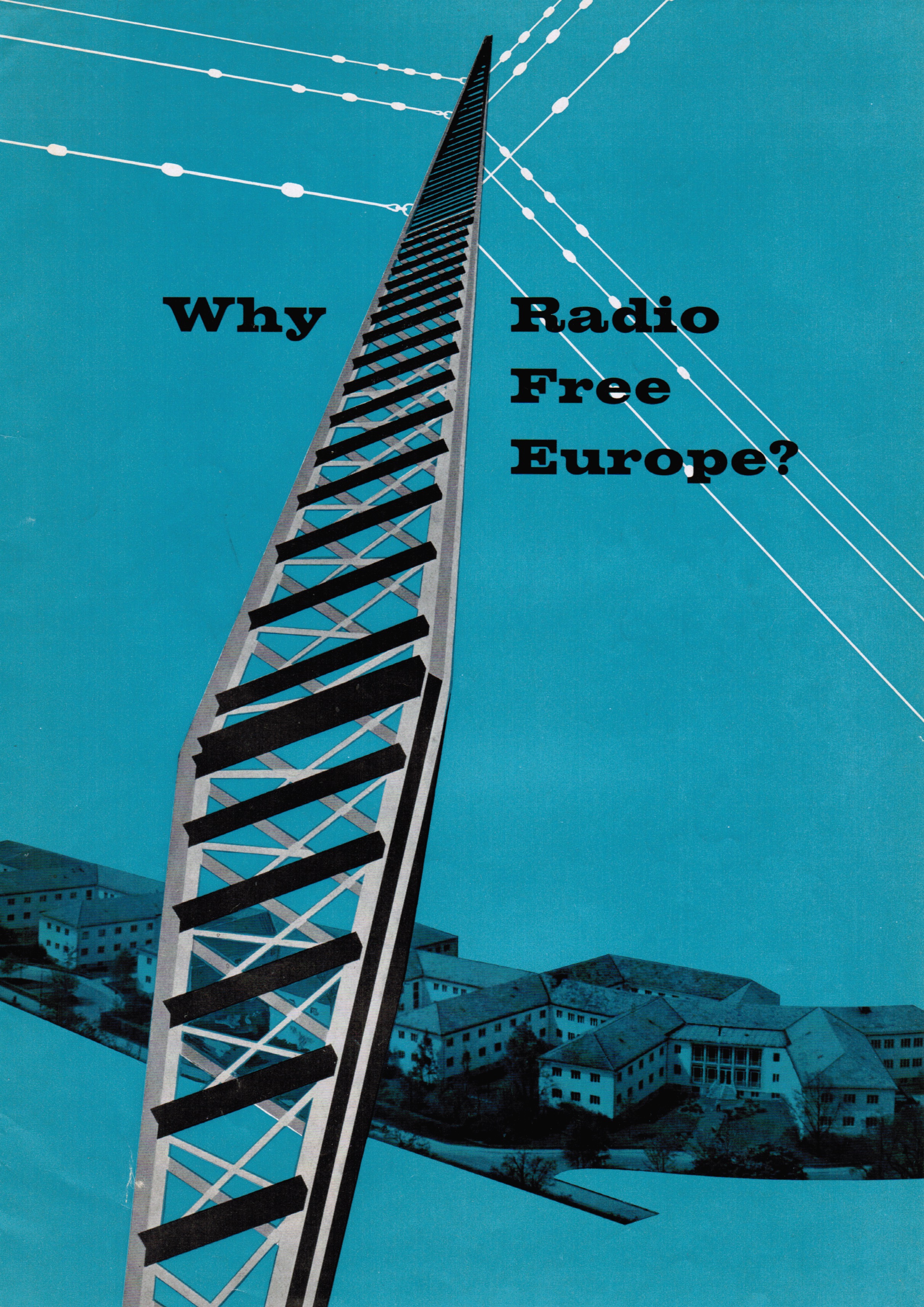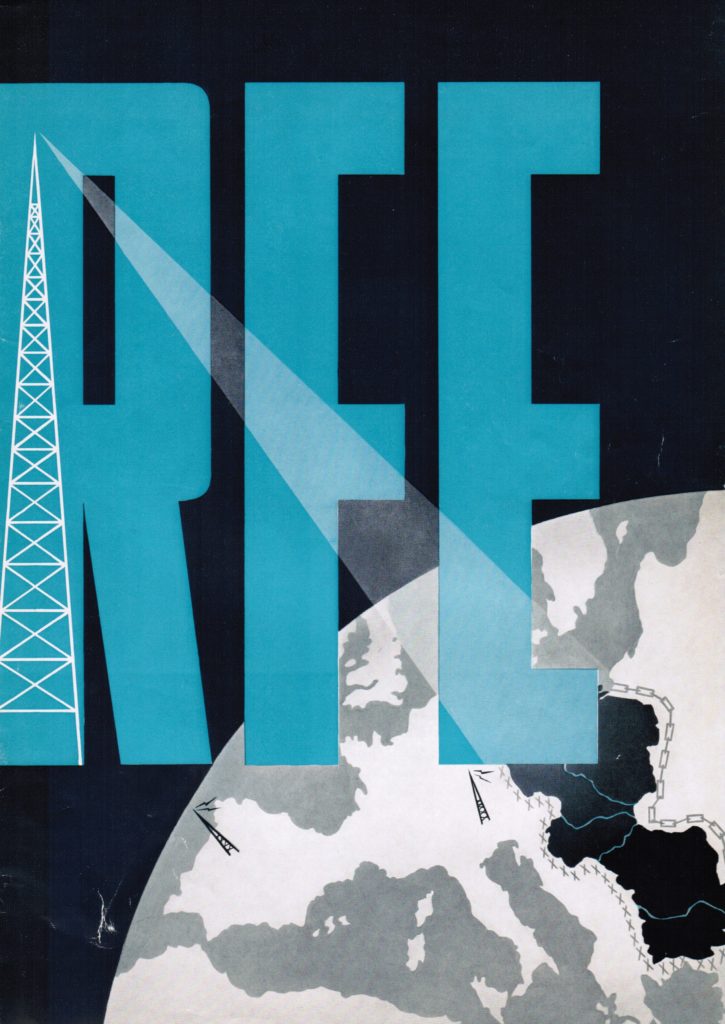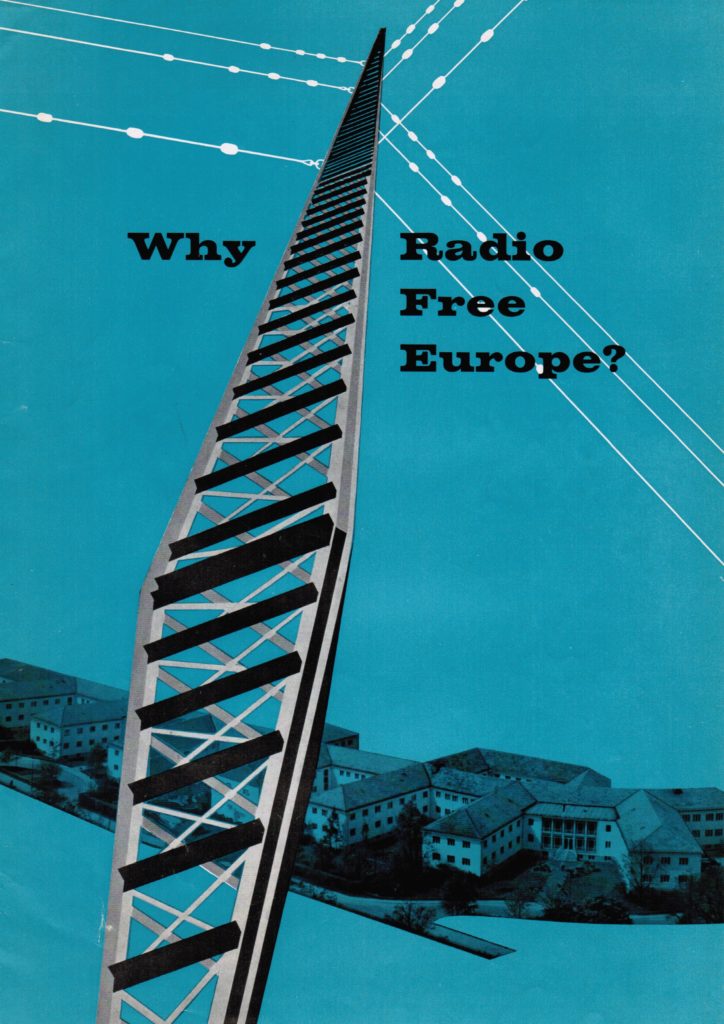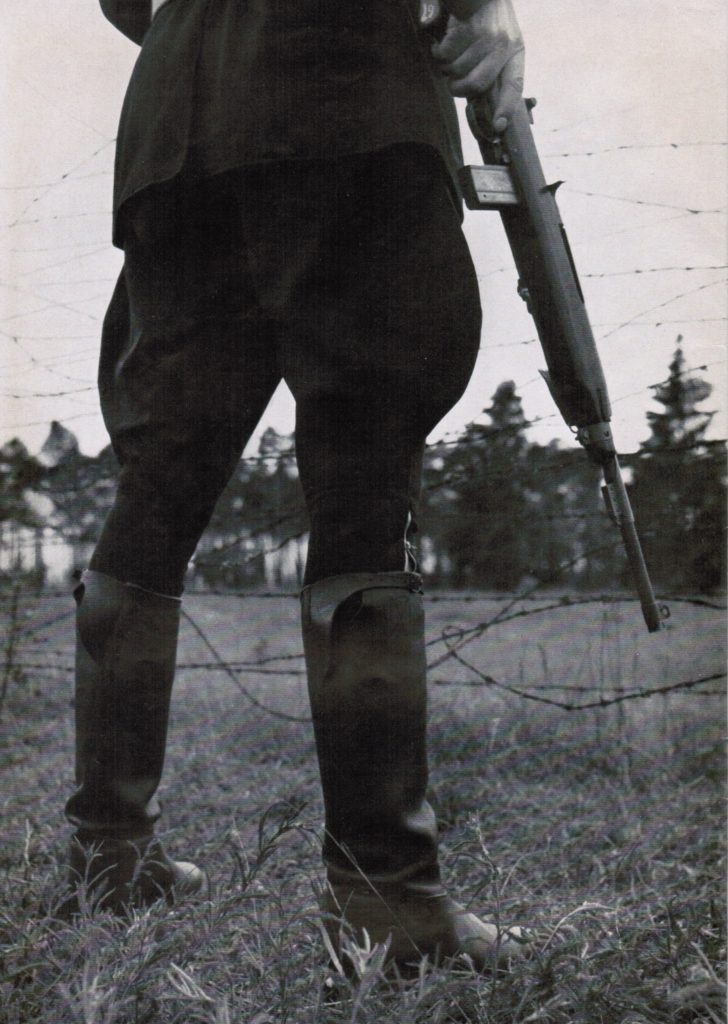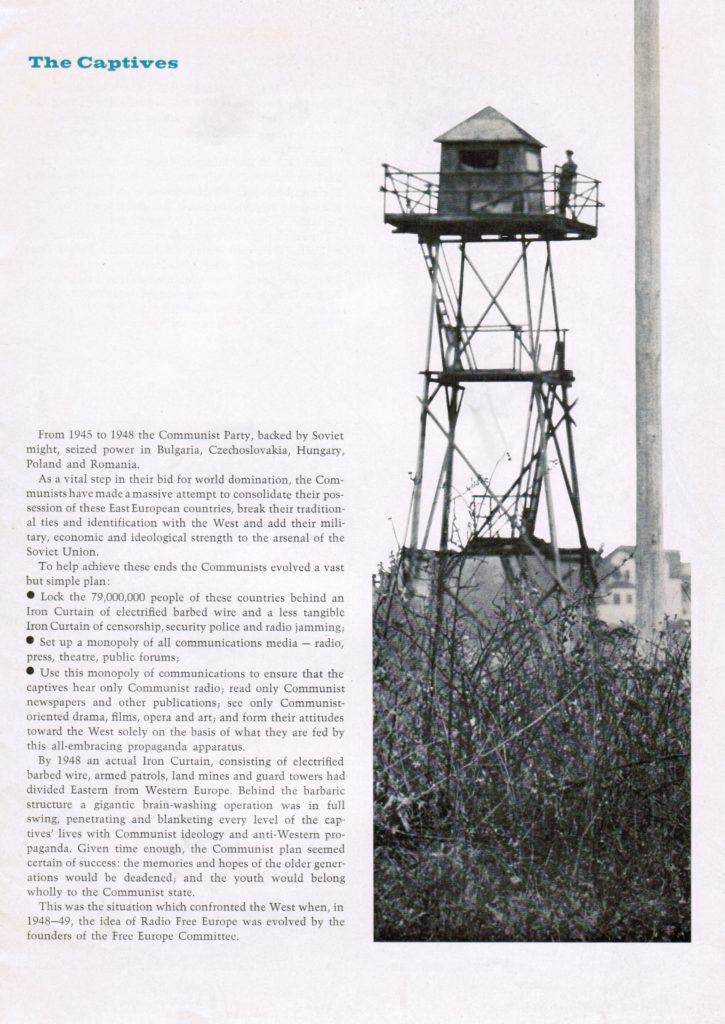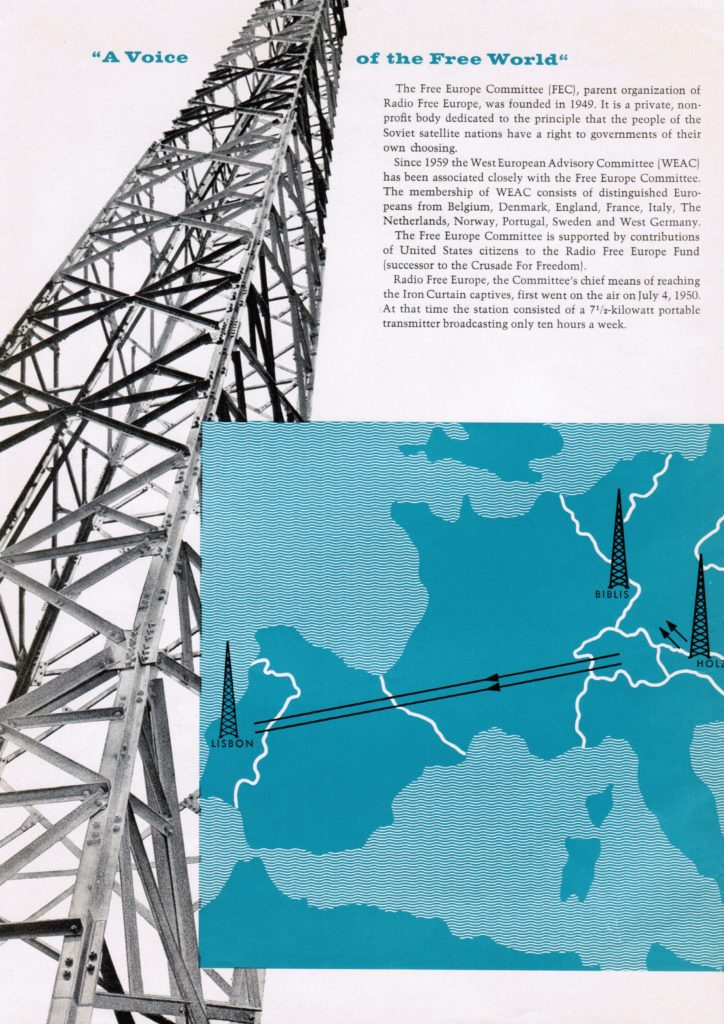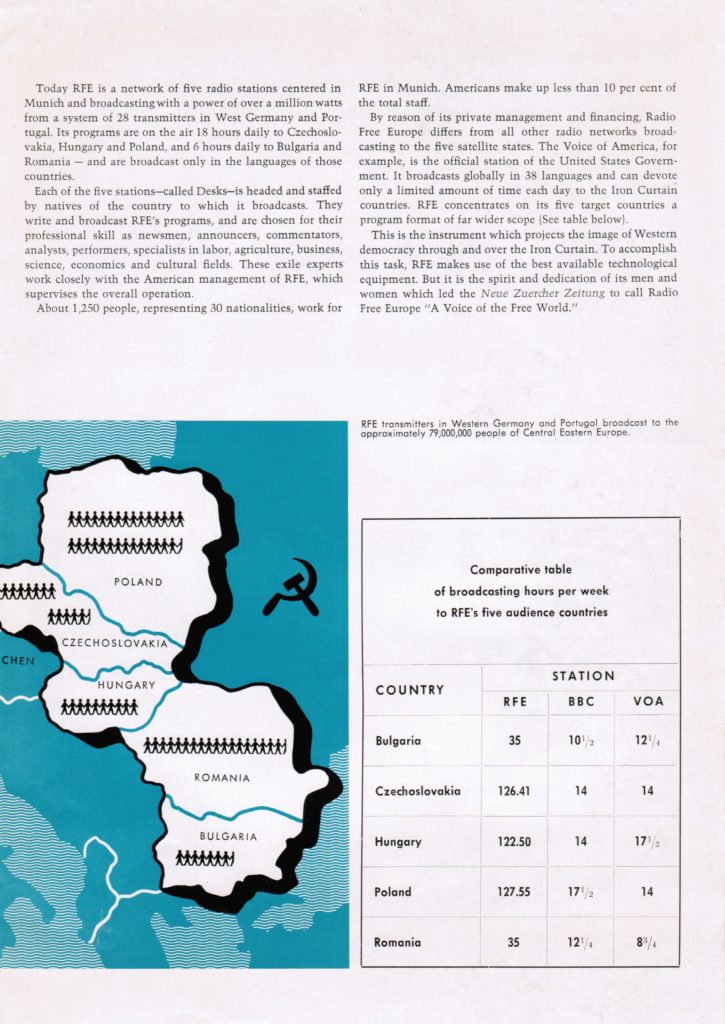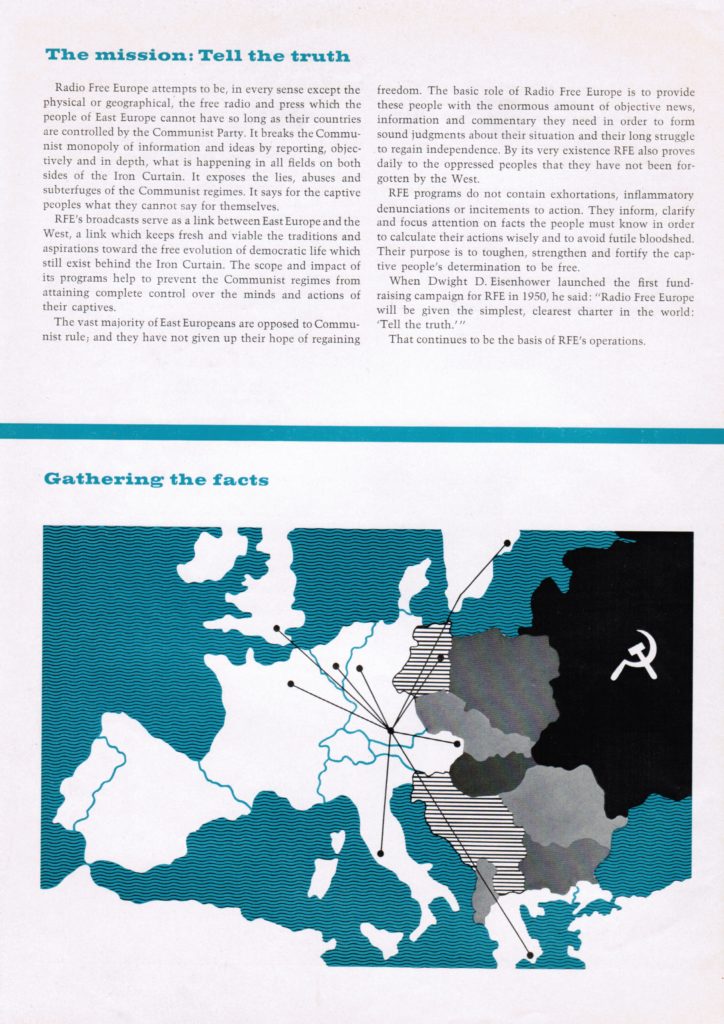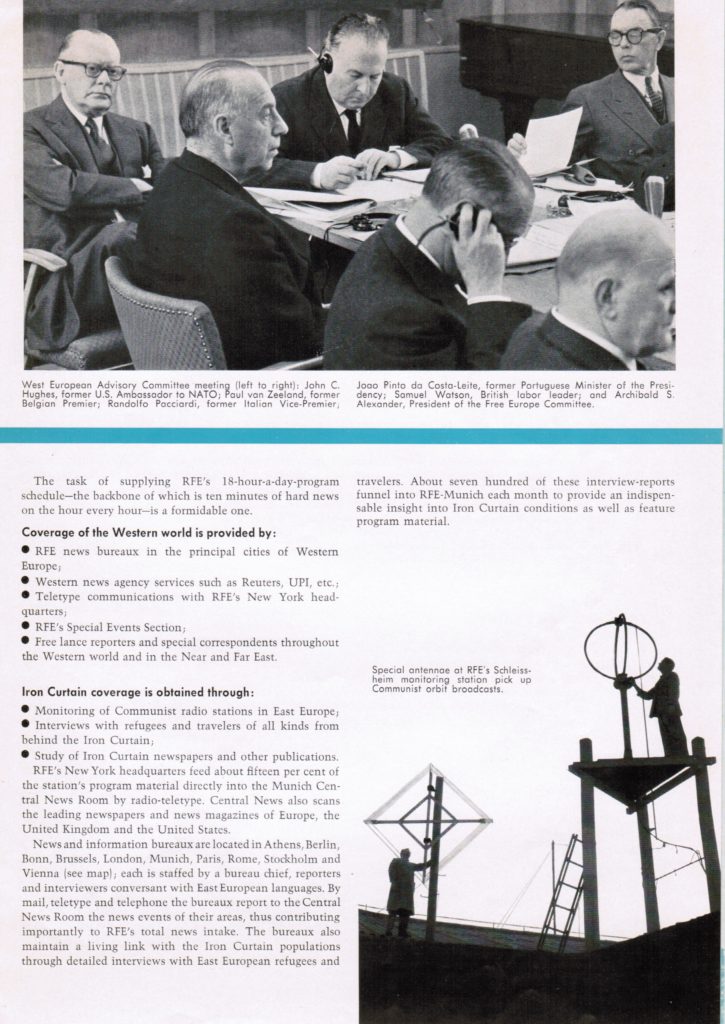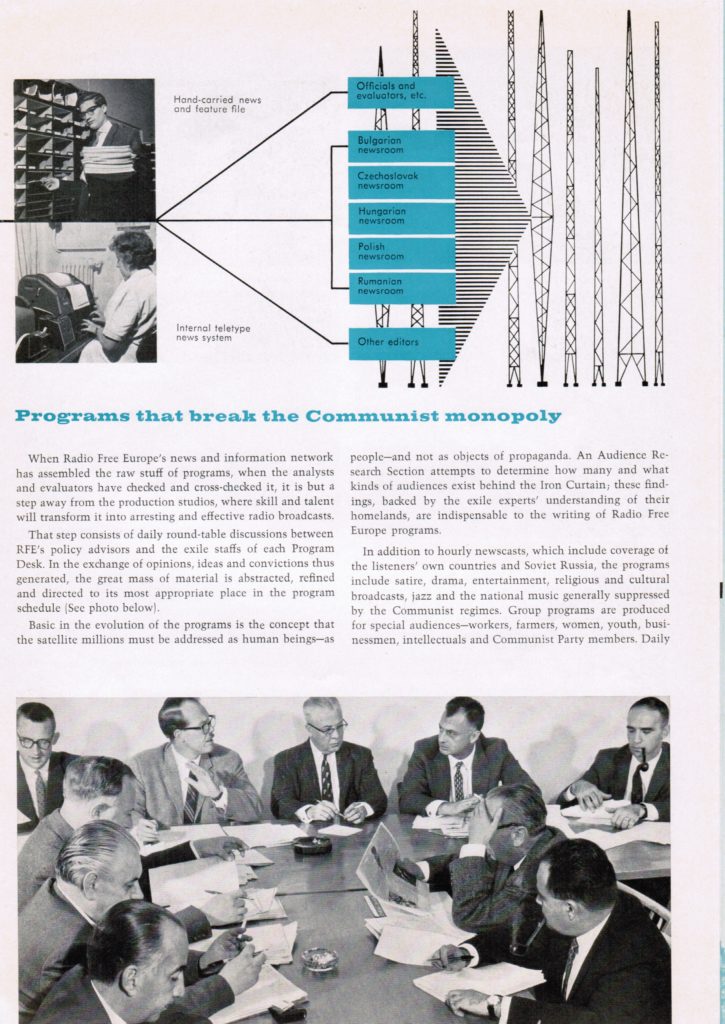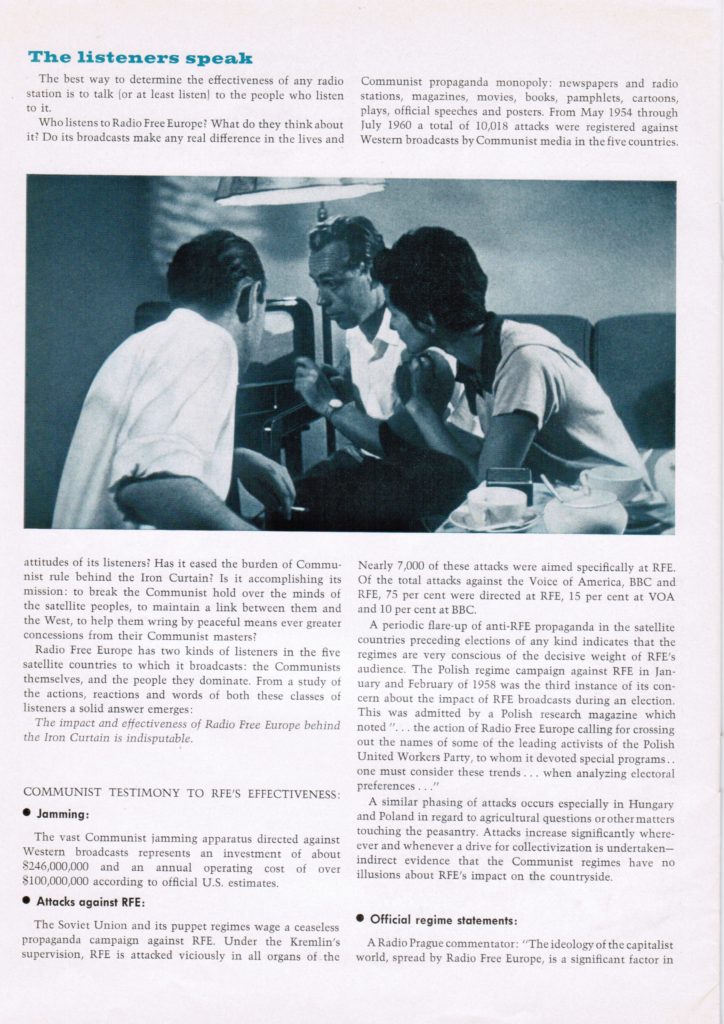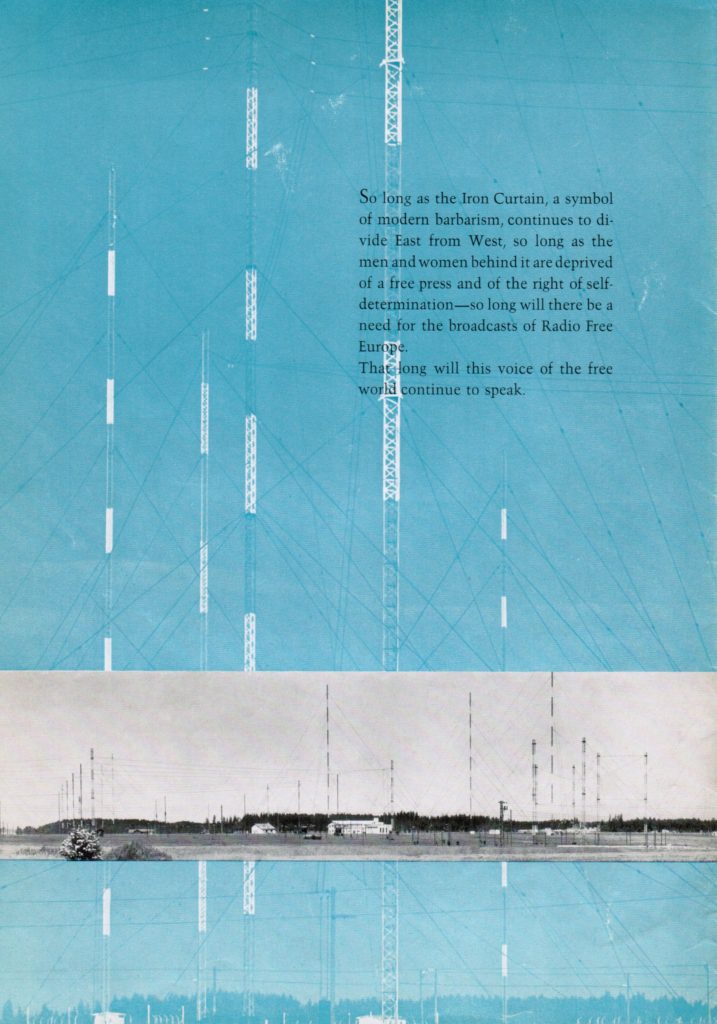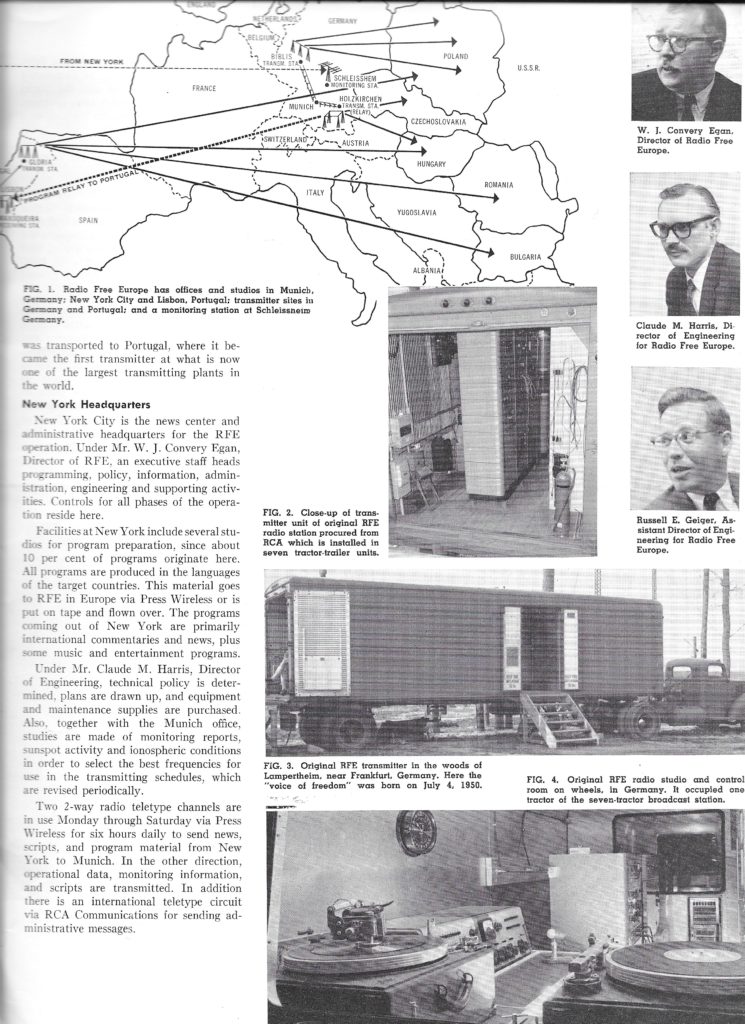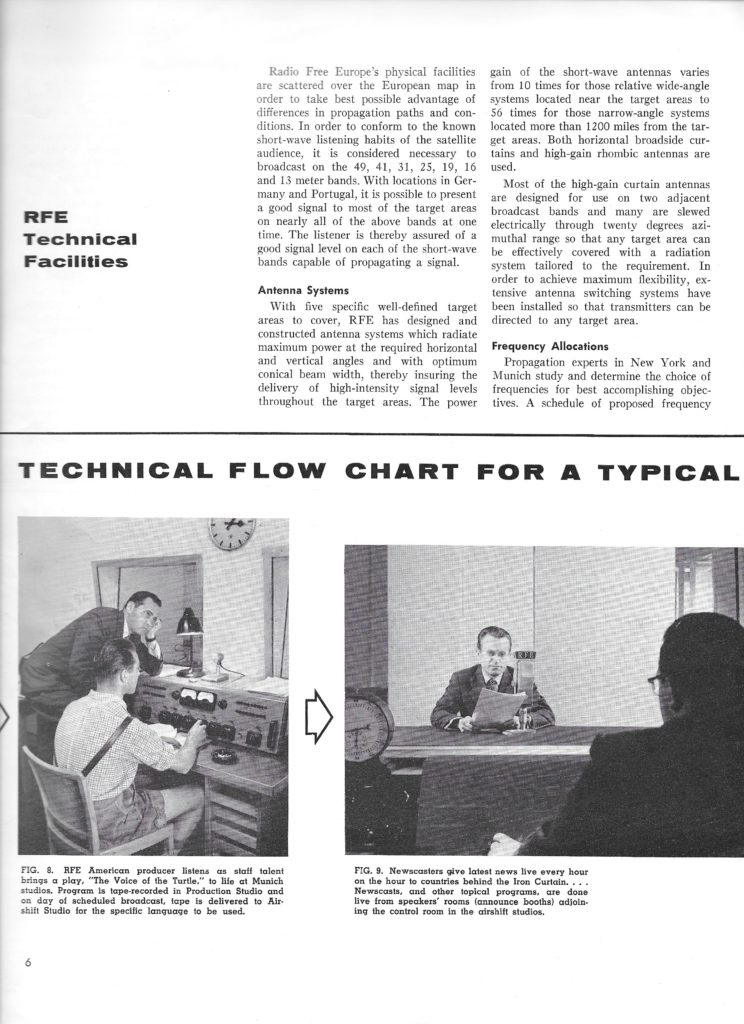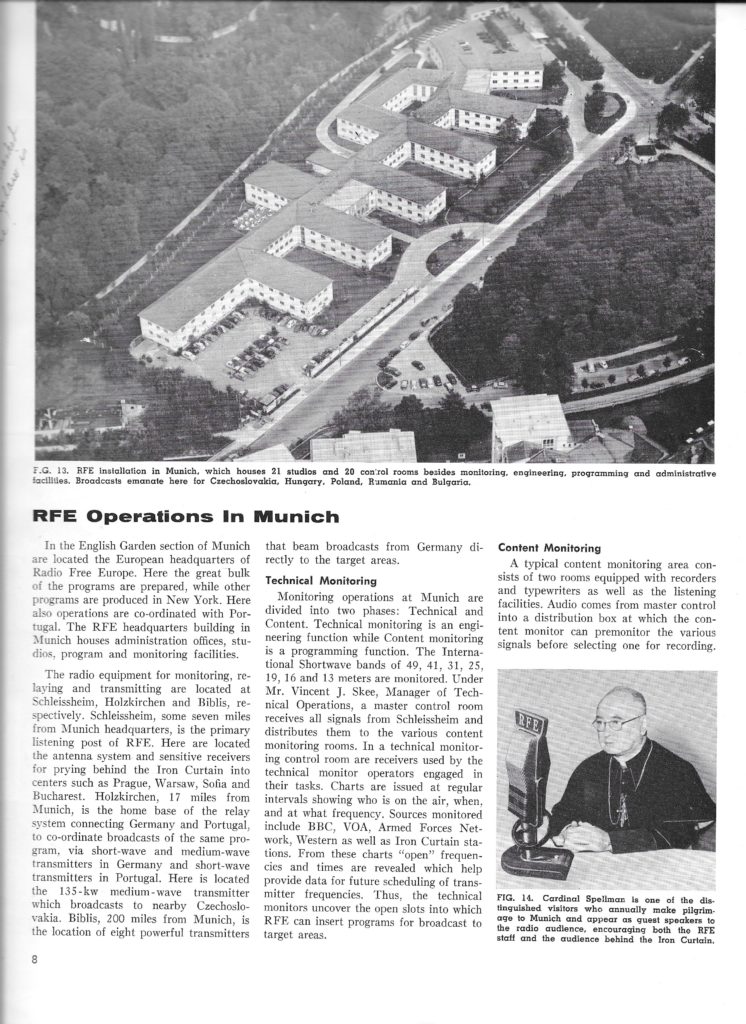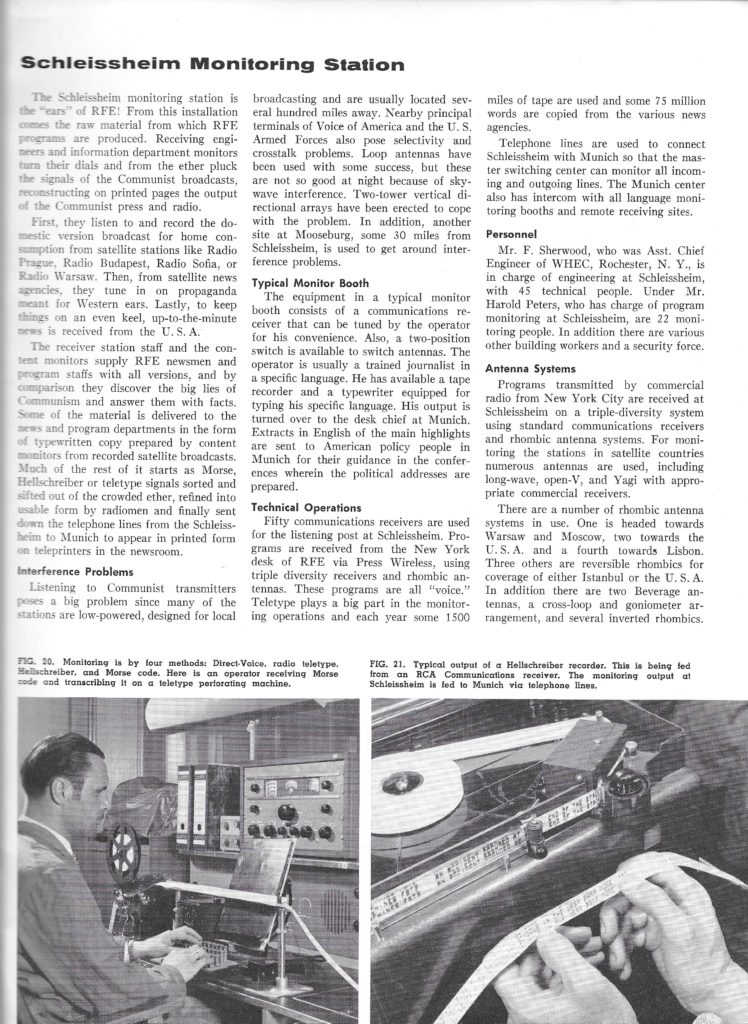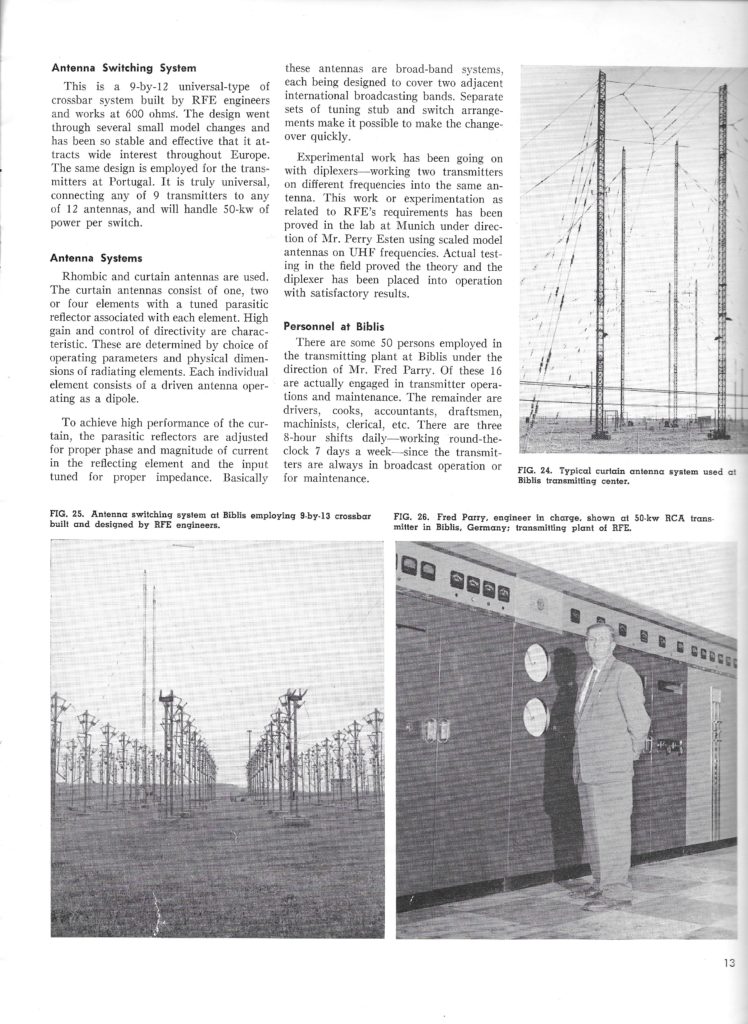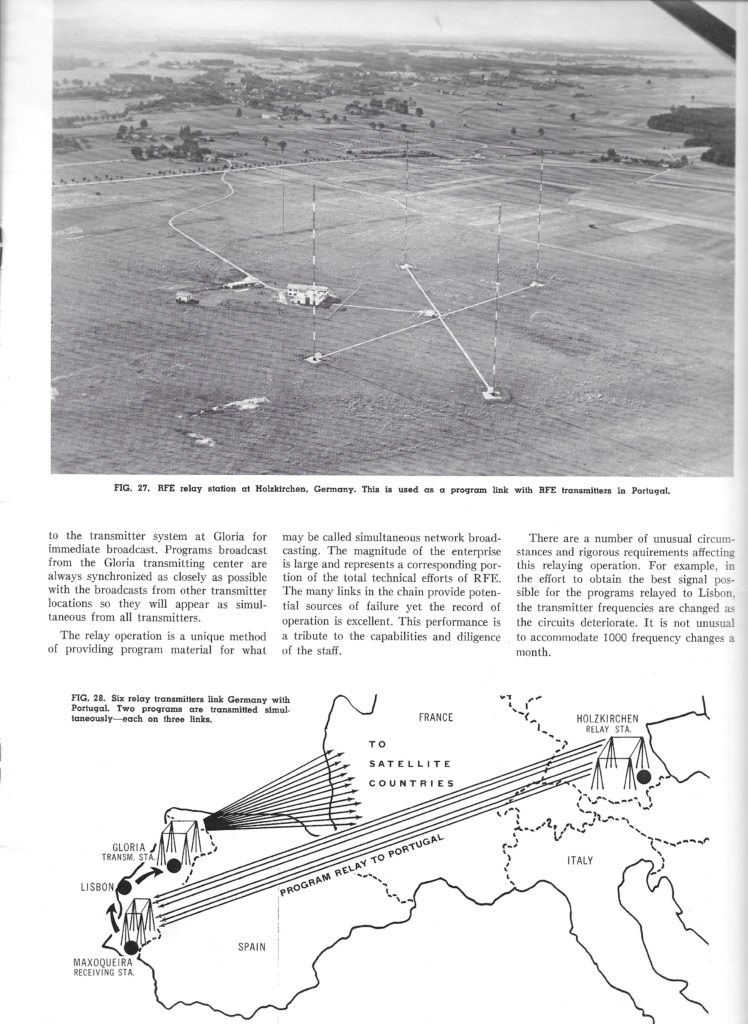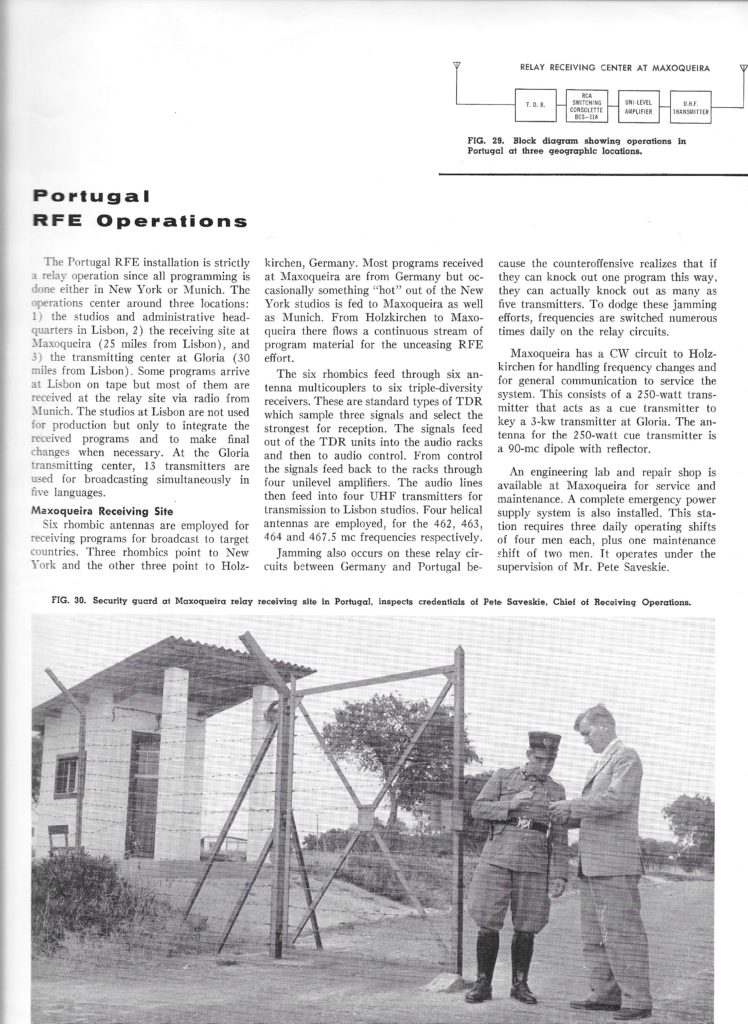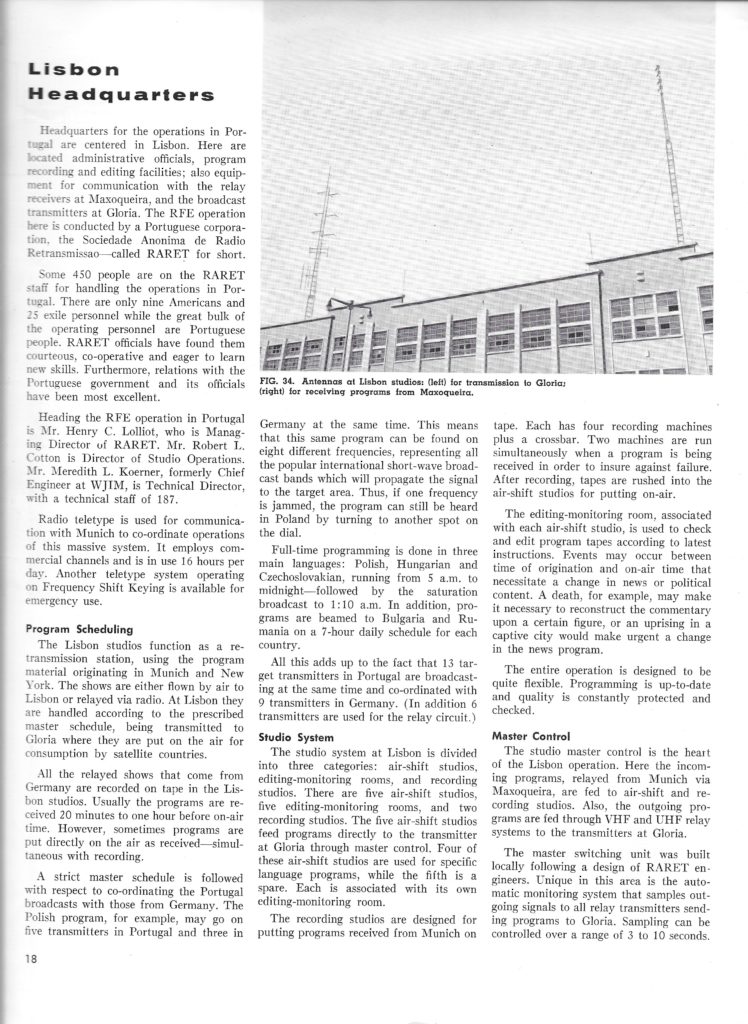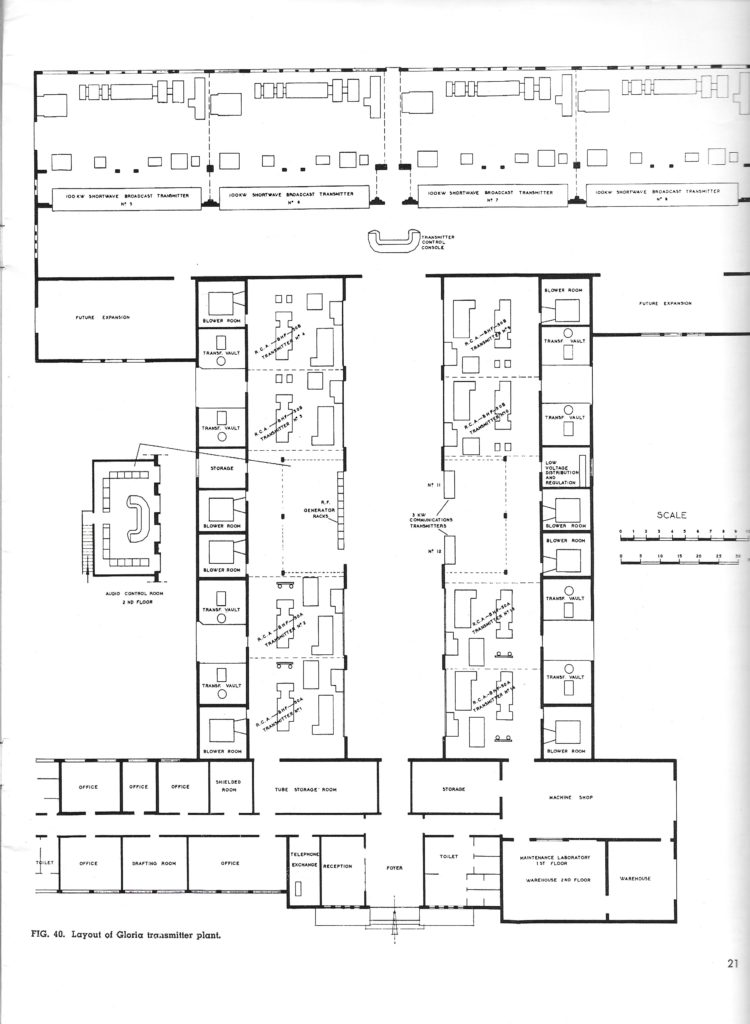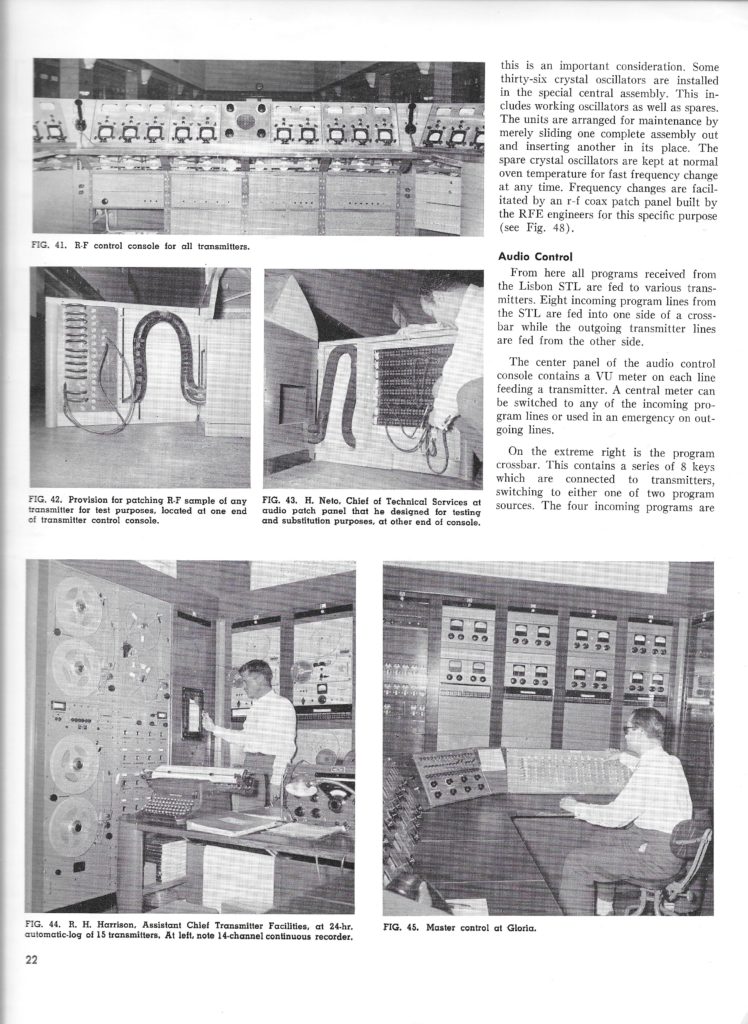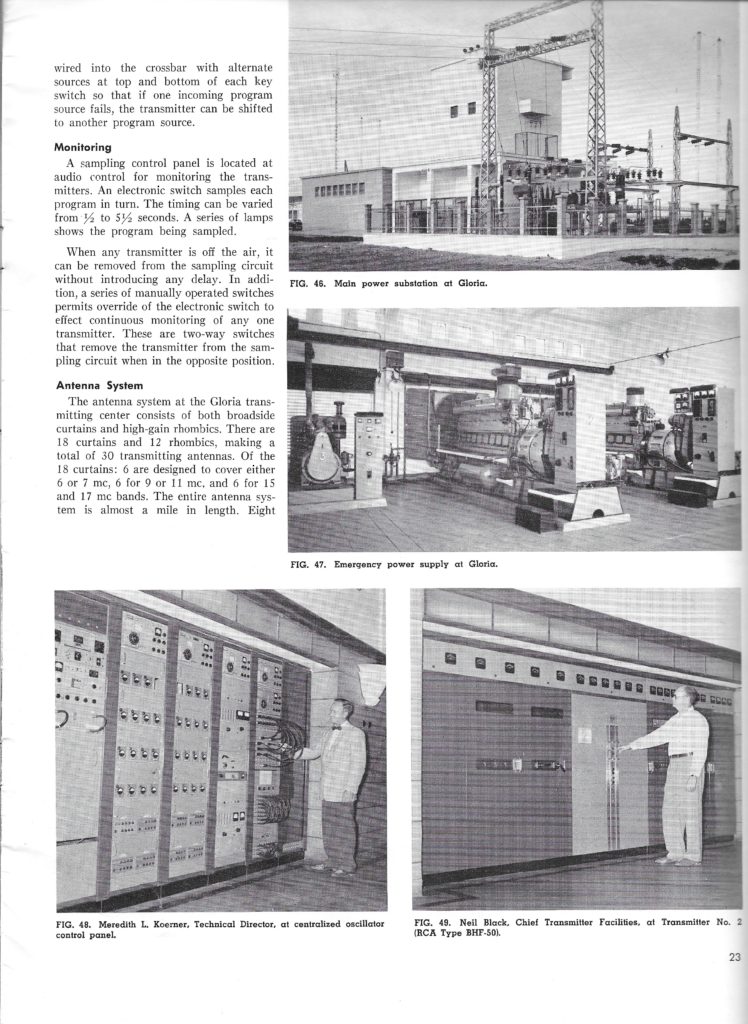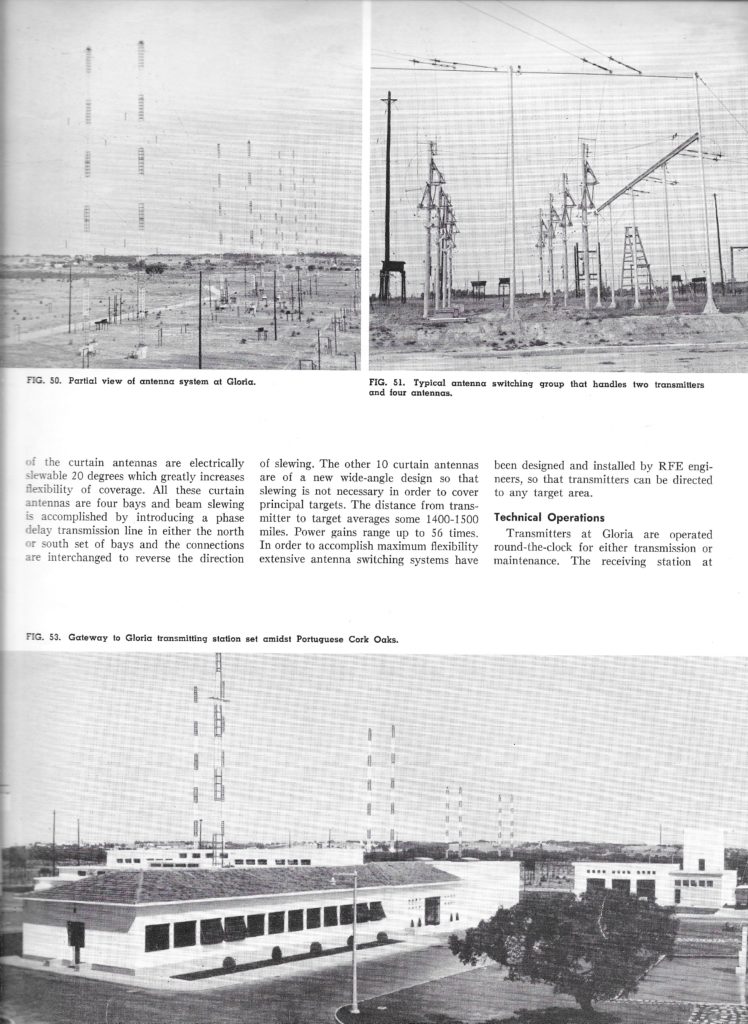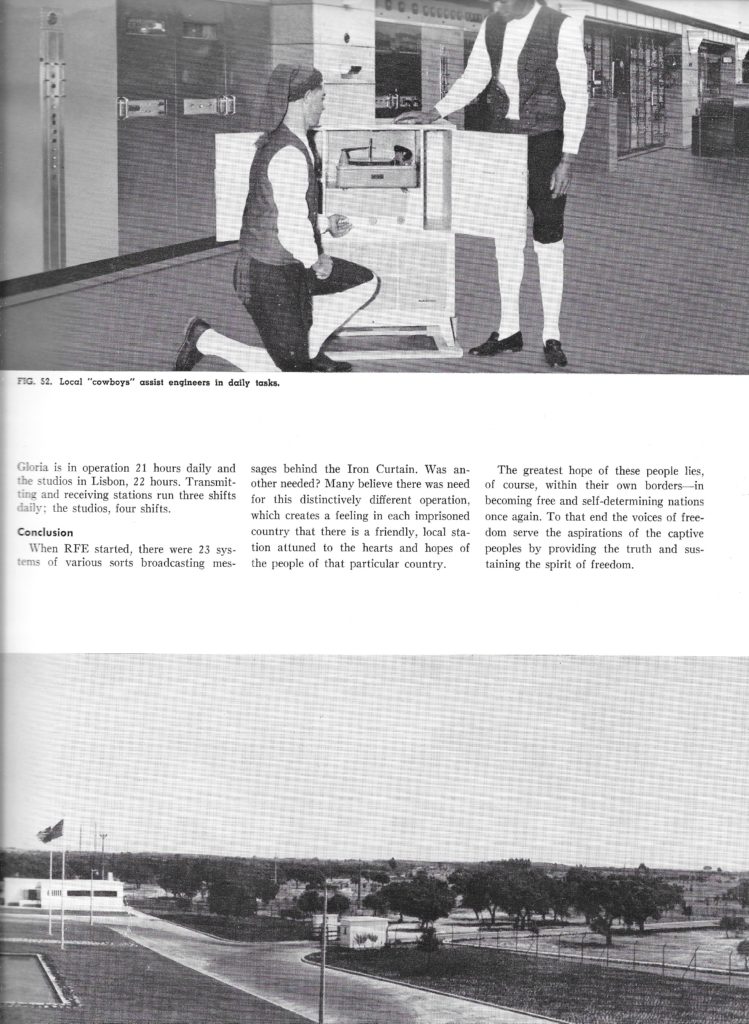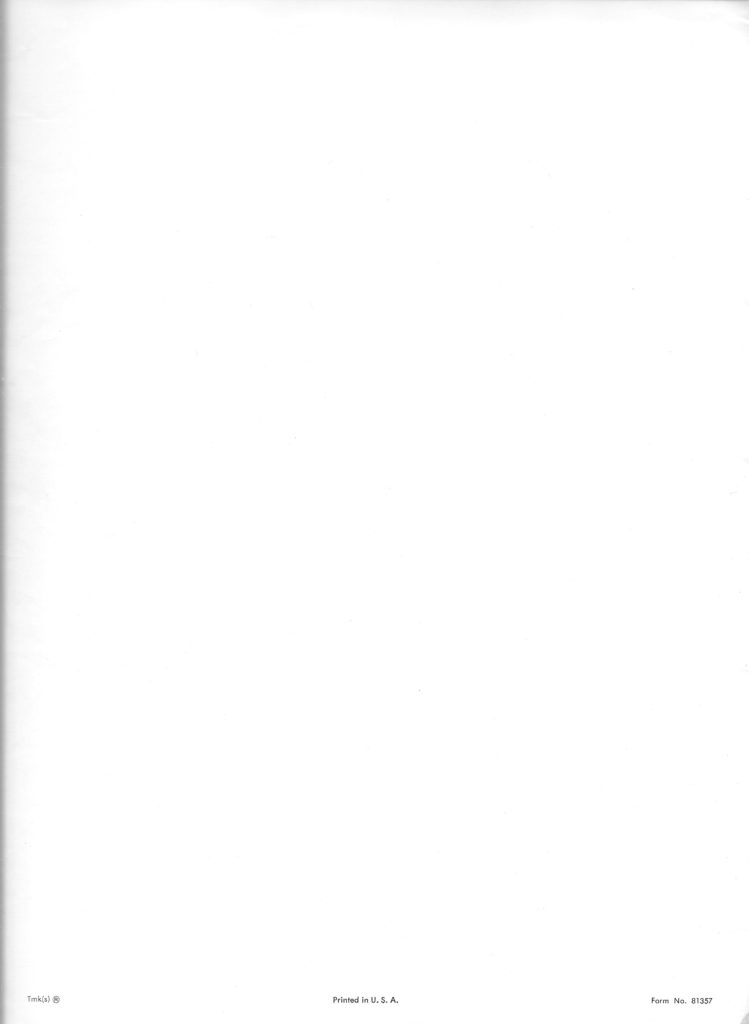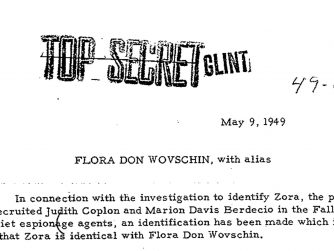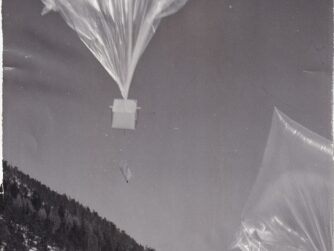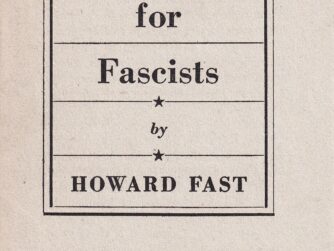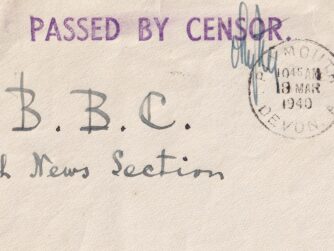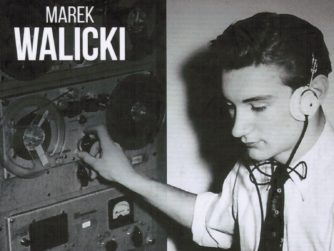Radio Free Europe started broadcasting on July 4, 1950. These images from a publicity pamphlet contain description RFE mission and programs circa 1960.
By Ted Lipien
Happy Birthday, Radio Free Europe!
I had lived in communist-ruled Poland until the age of 16, listening to RFE Polish Service. Its broadcasts opened my mind, although as far as knowledge of history and understanding of Marxism, Communism, state-run media, schools, and socialist economies, I had already learned basic facts from my family, neighbors, Catholic priests and nuns, and a few courageous teachers. I was also old enough to make my own observations of life in a country ruled by a Soviet-imposed, illegal, and inhuman regime. What Radio Free Europe gave me was hope that I might be able to escape such a life and live in freedom, which I did in 1970. I did not know then and did not expect the Soviet communist empire to collapse within my lifetime.
When I was a teenager in Poland, I dreamed of working for Radio Free Europe, but because I emigrated to the United States to join my father in 1973, I started working for the Voice of America in Washington, DC as a 20-year-old college student. In the 1980s, I had the honor of leading the VOA Polish Service during the Solidarity trade union’s struggle for human rights and Poland’s independence. I interviewed future Pope John Paul II and Solidarity leader and future Polish President Lech Wałęsa. In 1989 I covered for VOA the fall of communism in Poland. I retired in 2006 from my last VOA job as acting associate director in charge of central programs.
Thank you, Americans, for supporting Radio Free Europe, Radio Liberty, and the Voice of America during the Cold War!
I want to say: Thank You, RFE!
I also want to say: Thank You, VOA!
It was not always easy, but I had a rewarding and meaningful career in Cold War journalism.
Until Ronald Reagan’s presidency, we at the Voice of America did not have the same freedom as RFE journalists had. We envied their superior programming to Poland. But even with various policy restrictions, the Voice of America also contributed to restoring democracy in East-Central Europe from the early 1950s through the end of the 1980s.
Yet I’m convinced that the Voice of America could not have done it alone if there were no Radio Free Europe. The end of Communism in Europe would not have come as fast as it did. RFE’s administrative setup and personnel were far superior to VOA’s.
VOA had a much more problematic history than RFE, and unlike RFE, its leadership has never acknowledged some of its biggest mistakes and failures. There were Communist and Soviet sympathizers among Voice of America’s early officials and journalists, people like Howard Fast, the 1953 recipient of the Stalin Peace Prize; RFE never hired Communists unless they had already left the Communist Party and condemned Communism. There were times between 1942 and 1981 when VOA repeated Soviet propaganda, censored Alexandr Solzhenitsyn, and downplayed reports about the Gulag; RFE never did.
In the last decade, both RFE/RL and VOA went through some very challenging times. In 2012 and 2013, I successfully helped RFE/RL reform its management after dozens of Radio Liberty journalists in Russia were unjustly fired. Most of the dismissed journalists were eventually rehired by RFE/RL.
The Voice of America experienced even more significant difficulties in recent years. The management fired or disciplined several anti-Communist VOA Mandarin Service journalists who wanted to expose crimes of the Communist Party regime in China. They are still waiting for justice. Under former agency director John F. Lansing who is now running NPR, and former VOA director Amanda Bennett who has resigned in 2020, VOA editors posted materials in praise of Che Guevara and American Communist Angela Davis. They at times repeated without challenge propaganda from Russia, China, and Iran, leading finally to a public rebuke from President Donald Trump and the White House.
VOA, and even to some degree RFE/RL, have acquired in recent years a strong partisan bias of left-leaning American media which now defends the failed former agency executives and biased VOA editors while attacking the new management which at least promises to bring administrative reforms and to respect the VOA Charter. Reading U.S. media accounts of the controversy and looking at some recent Voice of America programs I sometimes feel I’m back in communist-ruled Poland, reading communist newspapers.
But I still have faith in American democracy, free elections, free press and hopefully the ability of U.S. government-funded broadcasters to change and improve as they had done in the past. I have not yet lost my faith in Radio Free Europe, Radio Liberty, and the Voice of America. May they still help those who want freedom and uncensored news without propaganda and ideological bias.
Happy Fourth of July 2020!
Ted (Tadeusz) Lipien
Radio Free Europe started broadcasting 70 years ago on July 4, 1950. This publicity pamphlet describes RFE circa 1960.
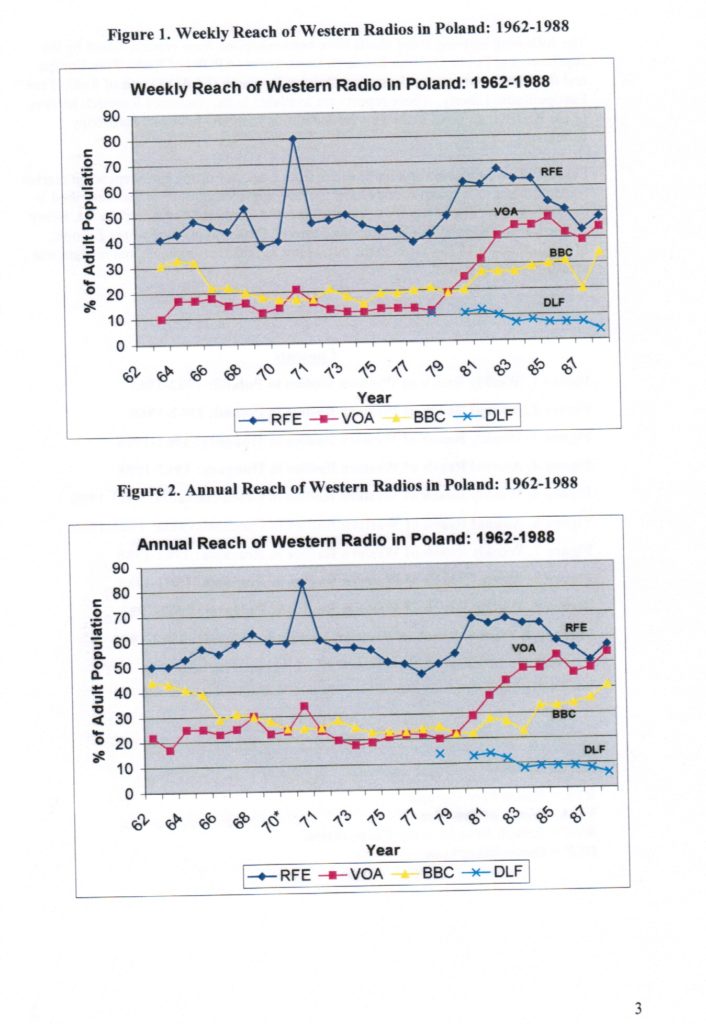 The establishment of Radio Free Europe started out as an initiative of a number of prominent Americans but was secretly guided and funded from the beginning by the United States government, initially through the Central Intelligence Agency (CIA) and later through open appropriations from the U.S. Congress. The U.S. government’s funding and the CIA link were kept secret and not mentioned in early RFE publicity documents and media reports. Contributions from private citizens and American corporations were solicited through the so-called “Crusade for Freedom” campaign, but they did not provide funds anywhere near what was needed to keep Radio Free Europe on the air. The CIA connection was eventually disclosed ended in 1971.
The establishment of Radio Free Europe started out as an initiative of a number of prominent Americans but was secretly guided and funded from the beginning by the United States government, initially through the Central Intelligence Agency (CIA) and later through open appropriations from the U.S. Congress. The U.S. government’s funding and the CIA link were kept secret and not mentioned in early RFE publicity documents and media reports. Contributions from private citizens and American corporations were solicited through the so-called “Crusade for Freedom” campaign, but they did not provide funds anywhere near what was needed to keep Radio Free Europe on the air. The CIA connection was eventually disclosed ended in 1971.“What stands out is the Radio’s autonomy. Even when financed out of CIA appropriations, the Radio’s policy decisions were neither dictated nor in any way guided by the Agency.”— George R. Urban, former director of Radio Free Europe.George R. Urban, Radio Free Europe and the Pursuit of Democracy: My War Within the Cold War (Hew Haven & London: Yale University Press), p. 50.
“Appropriately enough, on July 4, 1950, in the woods of Lampertheim, near Frankfurt, Germany, the Voice of Freedom was born. At that time the National Committee for a Free Europe, organized by a group of public-spirited American citizens, first started beaming local language programs to peoples in the satellite countries. With the support of contributions from interested Americans to the Crusade for Freedom, a mobile RCA 7500-watt transmitter, studio and supporting facilities housed in several trailer vans had been procured.”Paul A. Greenmeyer, “Radio Free Europe’s Broadcast Operation,” Broadcast News, Vol. 94, April 1957 and Vol. 95, June 1957.
“It was fittingly, on May Day [May 1, 1951], the most revered holiday of the international working-class movement, that Radio Free Europe inaugurated its full broadcast service to the peoples of Eastern Europe. … Technically, RFE had been beaming its message to Eastern Europe for the better part of a year; the initial broadcast was made on July 4, 1950, and a regular schedule of daily programs was introduced shortly thereafter. Those early programs, however, were produced by a neophyte staff in New York and then relayed to the audience through a cumbersome process that involved shipping the tapes to Europe and broadcasting the programs over outmoded and weak transmission equipment in Germany. No matter how skillfully crafted the message, the weak signal alone guaranteed that listenership would be limited. By May 1, 1951, many of the early problems had been resolved. Several transmitters, the most up-to-date and powerful available at the time, had been acquired and strategically located in several sites in West Germany. A European broadcasting headquarters had been opened in Munich, a city chosen for its proximity to the RFE audience countries as well as its sizable East European exile community. The staff of journalists had been enlarged and strengthened by the addition of a number of highly regarded exiled writers and editors.”— Arch Puddington, deputy director of the New York Bureau of Radio Free Europe-Radio Liberty from 1985 to 1993, a journalist and commentator whose writings have appeared in Commentary, National Review, New York Times, Washington Post, and other publications.Arch Puddington, Broadcasting Freedom: The Cold War Triumph of Radio Free Europe and Radio Liberty (Lexington: The University Press of Kentucky, 2000), pp. 1-2.
“The certificate of incorporation of a nonprofit company called the Committee for Free Europe, Inc. was submitted to the State of New York for approval on April 29, 1949. … The first meeting of the Committee for Free Europe (CFE) took place on May 17, 1949 … . Directors and officers included future CIA director Allen Dulles … . Other directors included DeWitt Wallace, publisher of Reader’s Digest, and Henry Luce, publisher of Time, Fortune, and Life magazines. … Former U.S. ambassador to Japan, Joseph C. Grew, became CEF chairman of the board. He announced at a press conference on June 1, 1949 that, that the new corporation will ‘Put the voices of these exiled leaders on the air, addressed to their own peoples back to Europe, in their own languages, in the familiar tones. We shall help them also, if we can, to get their messages back by the printed word…. Of course we are not going to compete with the Voice of America, for the Voice is under restrictions by reason of its official character. … In the late 1940s, the CIA’s Special Procedures Group (SPG) had small short-wave transmitters from the American military for broadcasting to the Soviet Union and Eastern Europe from the U.S. zone of Germany, under the code name ‘Projet UMPIRE.’ A 7.5-kilowatt, short wave transmitter (studio and transmitter vans, fuel supply truck and a truck for antennas) nicknamed ‘Barbara’ was positioned near Lampertheim, Germany. On July 4, 1950, Radio Free Europe transmitted its first program from ‘Barbara,’ only thirty minutes in length, to Czechoslovakia as an ‘audience building broadcast. The press release the day before outlined not only the ideological basis for the programming, but also the cover-up of the true sponsorship of RFE: ‘Owned and operated by the National Committee for a Free Europe, Inc., a group of private American citizens, Radio Free Europe will broadcast the true story of freedom and democracy to the eighty million people living in Communist slavery between Germany and Russia. Freed of diplomatic limitations, the broadcasts will be hard-hitting.’ … The first broadcasts were prepared in New York and air transported to Germany, but soon the entire broadcast operation was moved to Munich, Germany.”— Richard H. Cummings, director of security for Radio Free Europe/Radio Liberty for 15 years beginning in 1980.Richard H. Cummings, Radio Free Europe’s “Crusade for Freedom (Jefferson, NC and London: McFarland & Company, Inc., 2009), pp. 9—24.
“In July of 1950 it first went on the air with a 7.5-kilowatt short-wave transmitter located near Frankfurt on the Main in West Germany. By the end of the year it was broadcasting one and a half hours a day to the people of Poland, Czechoslovakia, Albania, Hungary, Rumania, and Bulgaria. Programs were prepared on tape in New York and flown to Germany for transmission.”Robert T. Holt, Radio Free Europe (Minneapolis: University of Minnesota Press, 1958) pp. 13-14.


